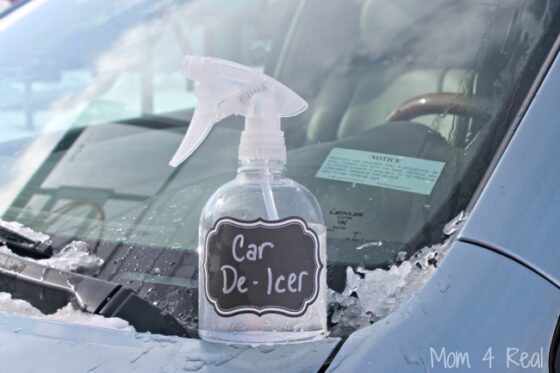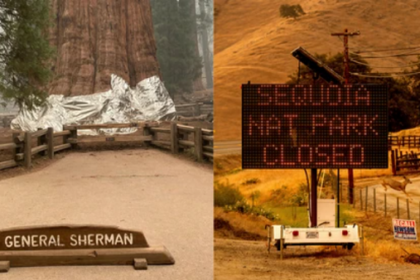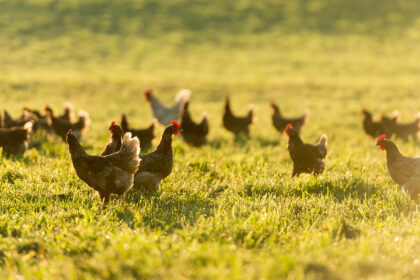As winter blankets our landscapes in a glistening layer of snow, the sight of salt-covered sidewalks and roads has become a familiar part of the seasonal scenery. While de-icing salt serves as a crucial ally in our battle against icy pathways, emerging research is shedding light on a startling revelation – the very salt that makes snow melt might be causing damage to our health, particularly targeting the vulnerable populations of children and pets. The hidden perils extend beyond slippery surfaces, reaching into the realms of our respiratory systems and the delicate complexities of our brains.
In this article, we’ll delve into the growing body of research that underscores the potential hazards associated with traditional de-icing salts and their impact on the well-being of both humans and pets. Moreover, we’ll explore safer alternatives and proactive measures that can be adopted to minimize the risks without compromising our winter safety. It’s time to reconsider our winter rituals and make informed choices to safeguard not just our pathways but the health of our loved ones as well.
As winter unfolds, the routine application of chemical de-icers to clear sidewalks, stairs, and driveways becomes a common sight. However, what many may not realize is that this seemingly innocuous practice carries significant environmental consequences, impacting waterways and, perhaps more alarmingly, posing potential threats to our health.
Environmental Impact of De-icers
Every snowflake that graces our surroundings, along with the ice it forms, can carry pollutants into our waterways. The key difference lies in how quickly the snow and ice melt and flow into the land, washing away de-icing chemicals and harmful pollutants into streams and storm drains. Although an individual’s use of de-icers may seem trivial, the cumulative effect of these compounds—ranging from rock salt to calcium chloride—can result in concentrated and harmful levels of salt and nutrients entering local water bodies.
Types of De-icers
Several de-icing options exist, each with its own set of environmental implications:
- Rock Salt (Sodium Chloride): Widely used but containing cyanide as an anti-caking agent, rock salt poses a threat to underwater life and is particularly harmful to plants due to its high chloride levels.
- Calcium Chloride: Considered an improvement over rock salt as it lacks cyanide, but it, too, can harm plants due to chloride. Despite costing more than rock salt, its potency allows for the use of smaller quantities.
- Magnesium Chloride: Deemed the least toxic de-icing salt, magnesium chloride contains lower chloride levels than rock salt or calcium chloride, making it safer for plants and animals, though not without potential issues.
- Calcium Magnesium Acetate (CMA): Recognized as the safest option for melting ice, CMA boasts lower toxicity compared to chloride-containing de-icers. However, its price tag may deter some, despite its environmental benefits.
Dangers of Cyanide and Chloride In De-Icers
Cyanide and chloride, often overlooked in the context of winter de-icing, wield unseen hazards to both human and pet health. In the case of rock salt (sodium chloride), a commonly used de-icing agent, the inclusion of cyanide as an anti-caking agent raises red flags. Cyanide, a potent and toxic compound, not only poses a threat to underwater life but can also seep into soils, causing damage to plants and grass. Its potential impact on respiratory health and overall well-being, especially for pets and children, demands careful consideration.
Chloride, a fundamental component of various de-icing salts, further compounds the risks. High chloride levels in de-icers like rock salt and calcium chloride can lead to soil contamination, hindering plant growth and causing nutrient imbalances. Additionally, chloride exposure is associated with the burning and cracking of pets’ sensitive paws, potentially leading to painful sores. As we tread through winter’s icy landscapes, understanding and mitigating the dangers posed by cyanide and chloride become essential steps towards safeguarding the health of our families and our four-legged companions.
Environmental and Health Impacts of Rock Salt
Rock salt, effective to approximately 12°F, comes with a myriad of issues that go beyond its ice-melting prowess. For driveways and sidewalks made of porous materials like concrete or brick, salt initiates freeze and thaw cycles, leading to erosion and structural damage. Furthermore, the negative repercussions extend to our furry companions, as salt can cause painful cracks and sores on pets’ sensitive paws and pose ingestion risks, potentially leading to lethality.
The environmental toll is equally concerning. Salt runoff contributes to over-salinization of rivers and lakes, endangering aquatic life. For plants, the repercussions are diverse, ranging from root damage and nutrient imbalances to inhibited water absorption and overall dryness. Signs of salt damage to plants, as listed by the University of Wisconsin, include browning leaf edges, wilting during hot dry weather, off-color foliage, and stunted growth.
Alternatives: Choosing Wisely for Healthier Pathways
Fortunately, alternatives exist, offering a balance between safety and environmental consciousness. Here are some options that prove to be less damaging than conventional rock salt:
- Rubbing Alcohol: A mixture of warm water, dish soap, and rubbing alcohol serves as an effective and satisfying alternative, preventing re-icing with a lower freezing point than water.
- Epsom Salt: A less harmful option for plants, Epsom salt, when combined with sugar, provides a slow-melting solution for front steps.
- Garden Fertilizer/Alternative Salts: Calcium chloride, though potent, can be mixed with sand to reduce its impact, while magnesium chloride offers a more environmentally friendly alternative. Urea, found in fertilizer, is non-toxic to pets and safe for concrete.
- Calcium Magnesium Acetate (CMA): A salt-free melting agent made from dolomitic limestone and acetic acid, CMA minimizes harm to plants and animals and is a viable alternative for environmentally-sensitive areas.
- Natural Fertilizer: Substances like alfalfa meal, wood ashes, and coffee grounds act as non-chemical fertilizers with minimal impact on the environment.
- Salt Plus Hot Water: Using hot water to melt ice, followed by a small amount of salt, lessens harm and increases effectiveness.
All Natural Car De-Icer
Ingredients:
- 1 cup of water
- 1 cup of isopropyl alcohol
- spray bottle
Instructions:
- Add 1 cup of water to a clean spray bottle.
- Add 1 cup of isopropyl alcohol.
- Shake well before each use.
Reducing Salt Usage: Practical Tips for Responsible De-Icing
To further mitigate the environmental impact, consider the following tips:
- Clear snow before applying de-icer to minimize usage.
- Use minimal de-icer and target specific areas instead of spreading it indiscriminately.
- Invest in shovels with sharp aluminum edges for efficient ice removal.
- Plan landscaping to keep salt-susceptible plants away from roads and sidewalks.
- In the spring, irrigate areas affected by snow/salt buildup to minimize root zone effects on plants.
- Hose off salt-covered foliage and use barriers to protect plants from heavy salt spray.
As winter wraps its icy embrace around our surroundings, the choices we make in de-icing our pathways carry profound implications for our health, the environment, and the well-being of our cherished pets.
The conventional reliance on rock salt, laden with cyanide and chloride, unveils a hidden threat to ecosystems, soils, and respiratory systems alike. The cumulative impact of widespread salt application magnifies the dangers, underscoring the urgency for a paradigm shift in our winter rituals.
Fortunately, alternatives abound, offering effective solutions without compromising safety or environmental integrity. From rubbing alcohol to urea, each option represents a conscientious step towards a healthier winter landscape.
Adopting best practices, such as early application, targeted use, and snow removal before de-icing, empowers us to minimize our ecological footprint while safeguarding our pathways.
In the face of growing evidence pointing to the adverse effects of traditional de-icing methods, it is incumbent upon us to prioritize health-conscious and environmentally-friendly alternatives. By choosing wisely, spreading awareness, and embracing responsible de-icing practices, we can navigate winter’s challenges with a commitment to preserving the delicate balance between safety and sustainability.
Winter need not be a season of compromise, but rather an opportunity to forge a path that protects our health, respects the environment, and ensures the well-being of our beloved pets. As we tread forward, may our winter journeys be marked not only by safety but by a conscious harmony with the world around us.





